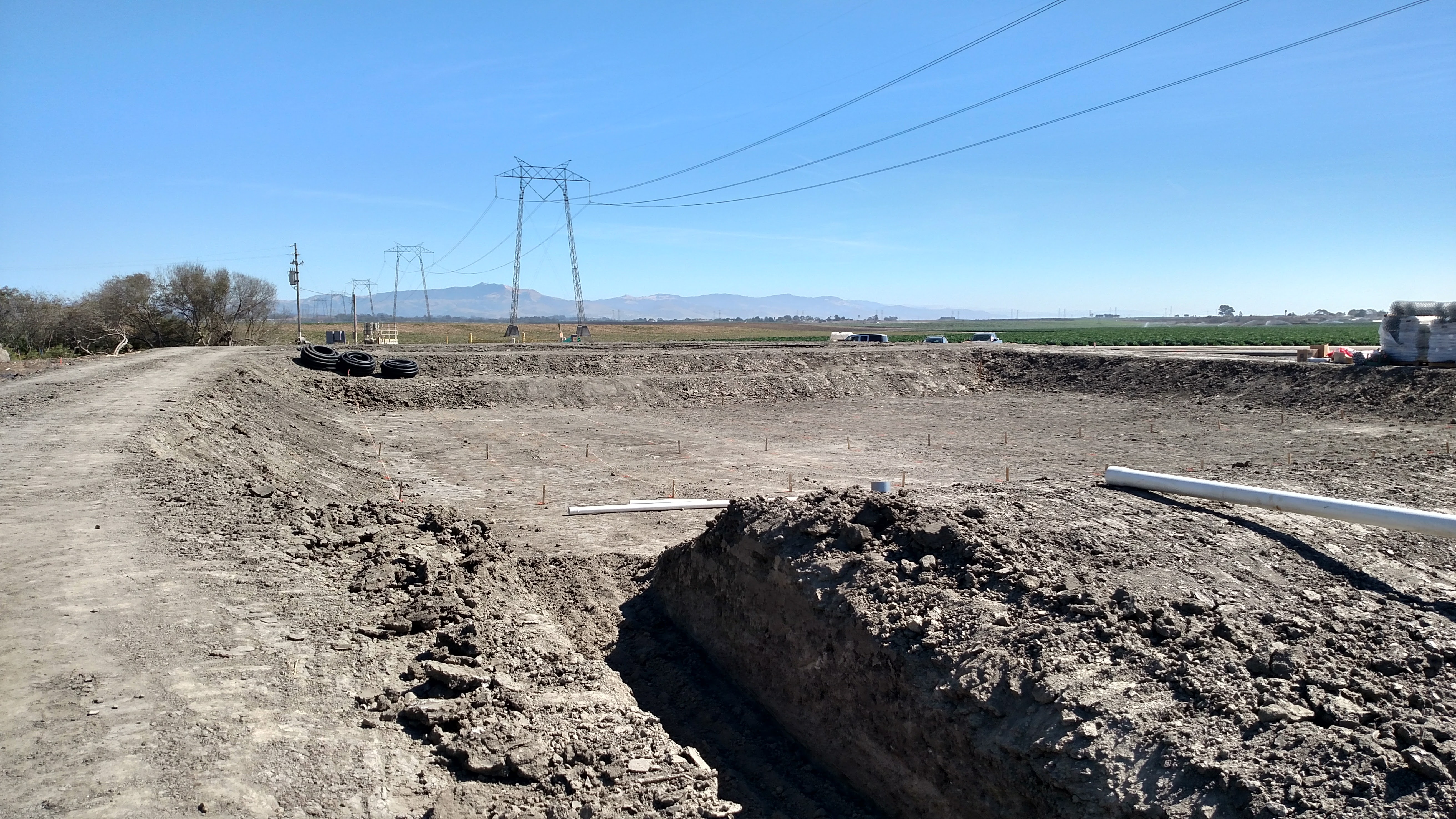Lessons Learned
Design considerations to keep in mind during bioreactor construction
Dimensions
- The length and width of the bioreactor is dependent on the desired amount of water to be treated in the system. Refer to our bioreactor calculator to help determine the proper sizing for you bioreactor based on input concentration of nitrogen and land space.
Pond Liner
- Polyethylene pond liner was used in our experimental multi-chamber bioreactor in order to ensure that all water entering the chambers was being treated and exiting into the treatment wetland (not contributing to groundwater recharge). While this is important for experimental procedures, when constructing an active, on-farm bioreactor we recommend using alternatives like clay soil. We found that pond liner was difficult to maintain due to the attraction of rats to the habitat that was created by the pond liner.
Woodchip Source Material
- Pressure treated wood and eucalyptus should be avoided due to their undesired chemical composition. Our woodchips have been sourced from Randazzo Salvage, which gets material from local construction and landscaping projects.
Filling the Bioreactor
- Bioreactors can be filled using a tractor to dump the woodchips into or near the site. Pitchforks and shovels can be used to manually spread the woodchips throughout the bioreactor. Blown woodchip delivery services are also an option if the site is not accessible by tractor. If using pond liner, be sure to do a leak test before treatment is added. Repairs to pond liner can be difficult with the presence of woodchips or plants.
Maintenance
- Routine maintenance will be required to prevent clogging and biofouling, but will vary between bioreactor systems. It is important to leave space around woodchip bioreactors to be able to access them.




